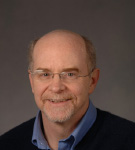Guest Editorial from the Scientific Director of NIAMS
NIH Stem Cell Center Gets a New Name and Director

It’s been a little more than a year since my guest editorial announcing a new stem cell initiative on campus: the Common Fund–supported NIH Induced Pluripotent Stem Cell Center (NiPC). And there is a lot of news to share!
Along with a new year has come a new name for NiPC: the NIH Center for Regenerative Medicine (NIH-CRM). With changes in stem cell research on campus and greater appreciation that the translational use of induced pluripotent stem cells (iPSCs) will require diverse types of expertise, NiPC broadened its scope and changed its name to NIH-CRM. This change is especially timely in view of the recent favorable decision by the U.S. District Court, District of Columbia, in Sherley v. Sebelius, to permit continued federal support of human embryonic stem cell research. Innovative stem cell work is also being done in the NIH Stem Cell Unit and the NIH Bone Marrow Stromal Stem Cell Transplantation Center. So the NIH intramural research program is in a good position to make rapid, clinically relevant advances in this groundbreaking field.
Over the past 16 months, NIH-CRM has been very busy. It has supported several intramural pilot projects that will facilitate the clinical translation of iPSCs. We have had two rounds of funding: 11 pilot projects in FY2010 and 13 in FY2011. The projects include the maintenance of pluripotency, development of preclinical animal models, devising a methodology for gene correction and insertion, use of disease-specific models, and more.
In July, NIH-CRM and the Stem Cell Interest Group (SCIG) cosponsored an inaugural stem cell research symposium to provide a platform for all NIH-CRM-funded investigators and others to present their latest and greatest findings, as well as to help build a collaborative community of investigators. (See the article). In a related effort to jumpstart stem cell capabilities on campus, NIH-CRM sponsored several training courses, both on and off the Bethesda campus, in mouse and human iPS cell generation and culture.
One of our major goals has been to recruit a director for the NIH-CRM. Some amazing stem cell biologists—candidates being considered for the job—have come through NIH to give presentations on their work. Thanks to the unwavering efforts of the NIH-CRM Search Committee, we have reached a significant milestone. At the July symposium, NIH Director Francis Collins announced that Mahendra Rao has been selected to be the NIH-CRM director.
Rao came on board in August 2011. I hope you will get to know him in the next few months. He’s an amazing guy with a wealth of experience in stem cell biology. He brings diverse experience—in academia, government, regulatory organizations, and industry—and we think he’s just the guy to get this complex initiative moving quickly. (Be sure to read “Meet the Director”)
We’ve accomplished a lot since last year’s editorial, but I would be remiss if I didn’t point out that none of this would have happened without the efforts of two remarkable people: Megan Laycock (NIH-CRM project manager) and Scott Lipnick (Science and Technology Policy Fellow, American Association for the Advancement of Science). I also thank the search committee, chaired by Pamela Robey, for its unrelenting efforts. There are many other individuals to thank for making NIH-CRM a reality—too many to list in this brief note. Nonetheless, thanks to everyone for pitching in so selflessly! The excitement in getting this new initiative off the ground has been palpable. It’s a real testament to the spirit of the NIH that we came together and got things moving quickly.
The vision for NIH-CRM is the same as it was for NiPC, namely, taking the potential of stem cell technology and translating it into new therapies for patients who desperately need them. What it will take to make this a reality is enormous, but there’s no place better to do this than in the NIH intramural research program. With the extraordinary expertise on campus and the resources of the Clinical Center, we will be able to meet a challenge that has the potential for transforming medicine as we know it.
John O’Shea has served as the acting director of NIH-CRM since its inception in 2010. To read his guest editorial from last year, see page 2 of the March–April 2010 issue of The NIH Catalyst.
This page was last updated on Monday, May 2, 2022
